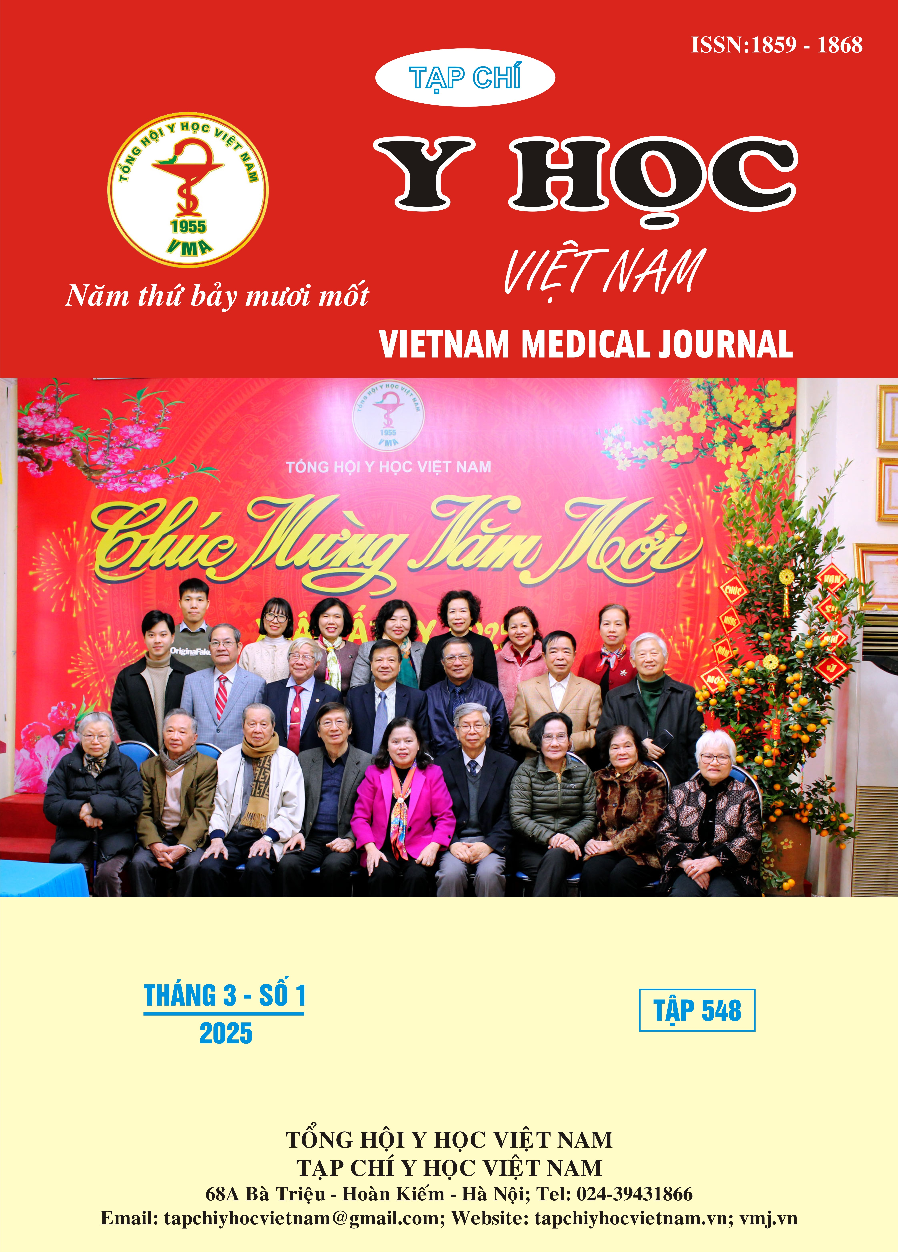ĐÁNH GIÁ KẾT QUẢ ĐIỀU TRỊ GÃY KÍN THÂN XƯƠNG CÁNH TAY BẰNG NẸP KHÓA
Nội dung chính của bài viết
Tóm tắt
Đặt vấn đề: Có nhiều phương pháp kết hợp xương cho điều trị gãy kín thân xương cánh tay. Sử dụng nẹp khóa, cho phép sử dụng vít thông thường và vít khóa, giúp ổn định và hạn chế biến chứng, đồng thời cho phép bệnh nhân vận động sớm. Mục tiêu: Mô tả đặc điểm chung và đánh giá kết quả điều trị gãy kín thân xương cánh tay bằng nẹp khóa tại Bệnh viện Đa Khoa Trung Ương Cần Thơ. Đối tượng và phương pháp nghiên cứu: Tiến cứu, can thiệp lâm sàng không nhóm chứng ở 31 bệnh nhân được chẩn đoán gãy kín thân xương cánh tay 1 hoặc 2 bên và có chỉ định phẫu thuật kết hợp xương nẹp bằng khóa. Kết quả: Độ tuổi thường gặp nhất là 16-40 tuổi, với nghề nghiệp chủ yếu là nông dân (29%). Bệnh nhân gãy loại A tại 1/3 giữa theo phân độ AO chiếm tỷ lệ cao nhất 48,4%. Kết quả liền xương rất tốt chiếm tỷ lệ cao nhất là 96,8%; không có bệnh nhân nào cho kết quả liền xương trung bình và kém. Về kết quả phục hồi chức năng khớp vai và khớp khuỷu, phục hồi chức năng rất tốt chiếm tỷ lệ 96,8%; không có kết quả trung bình và kém. Kết luận: Phẫu thuật kết hợp xương nẹp bằng khóa điều trị gãy kín thân xương cánh tay an toàn và kết quả tốt.
Chi tiết bài viết
Từ khóa
gãy kín thân xương cánh tay, nẹp khóa
Tài liệu tham khảo
2. Phan Quang Trí (2018), “Phác đồ điều trị gãy thân xương cánh tay”, Phác đồ điều trị của Bệnh viện Chấn Thương Chỉnh Hình Phần Một, Giáo Dục Việt Nam, Hồ Chí Minh, tr. 207-210.
3. Nguyễn Anh Tuấn, Nguyễn Quang Long (2003), “Sử dụng nẹp tổ hợp các-bon (C3) điều trị gãy thân xương cánh tay”, Y Học thành phố Hồ Chí Minh, 7 (1), tr. 6-9.
4. Angela Christine Chang, et al. (2019), “The modified anterolateral approach”, Journal of Orthopeadic Surgery, 27 (3), pp. 1-5. DOI: 10.1177/2309499019865954.
5. Sebastian Lotzien, et al. (2019), “ Open reduction and internal fixation of humeral midshaft fracture: anterior versus posterior plate fixation”, BMC Musculoskeletal Disorders, 20 (1). DOI 10.1186/s12891-019-2807-3.
6. Rebekah Belayneh, et al (2019), “Final outcomes of radial nerve palsy assiociated wit humeral shaft fracture and nonunion”, J Orthop Traumatol, 20 (1), 18. DOI: 10.1186/s10195-019-0526-2.
7. Seyed Mahdi, et al (2019), “Humeral shaft fracture: a randomized controlled trial of nonoperative versus operative management (plate fixation)”, Orthopedic Research and Reviews, 11, pp. 141-147. DOI: 10.2147/ORR.S212998.
8. Đỗ Đức Bình (2018), “Đánh giá kết quả phẫu thuật điều trị gãy kín đầu trên xương cánh tay bằng nẹp khóa tại Bệnh viện Quân Y 103”, Kỷ yếu Hội Nghị Khoa Học Thường Niên Hội Chấn Thương Chỉnh Hình Việt Nam lần thứ XVII, tr. 90.
9. Jae-Jung Jeong, et al (2019), “Narrow locking compression plate vs long philos plate for minimally invasive plate osteosynthesis of spiral humerus shaft fracture”, BMC Musculoskeletal Disorders, 20. DOI: 10.1186/s12891-019-2697-8.


